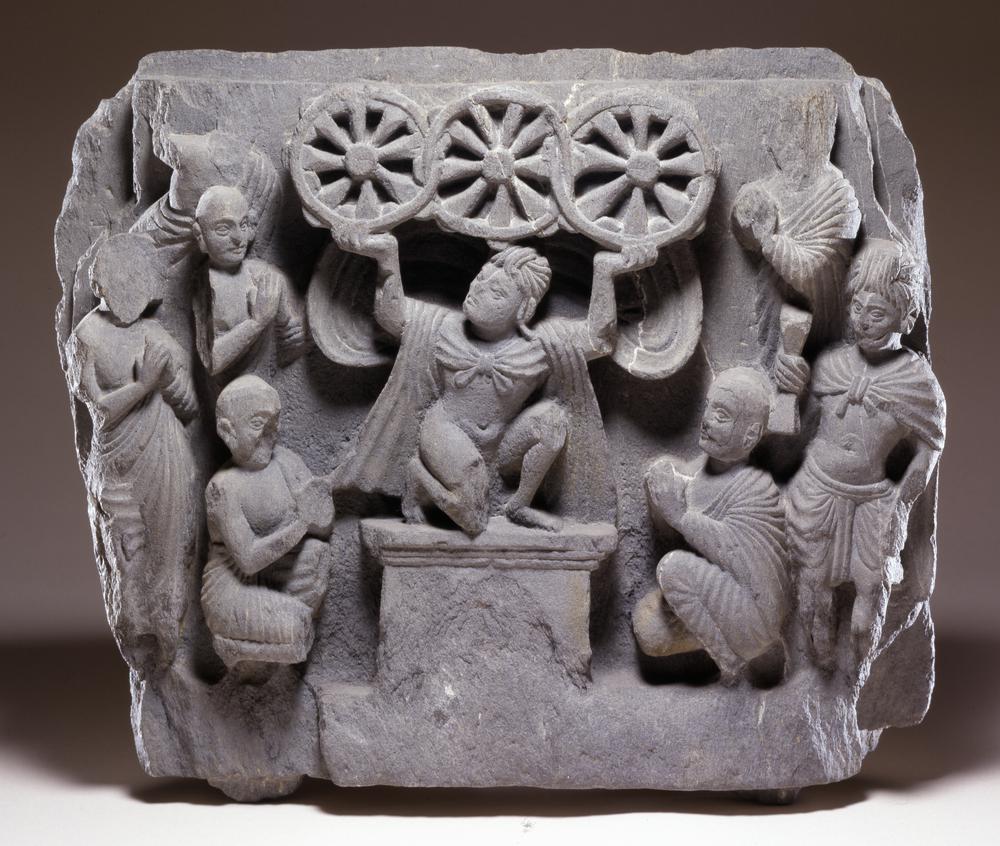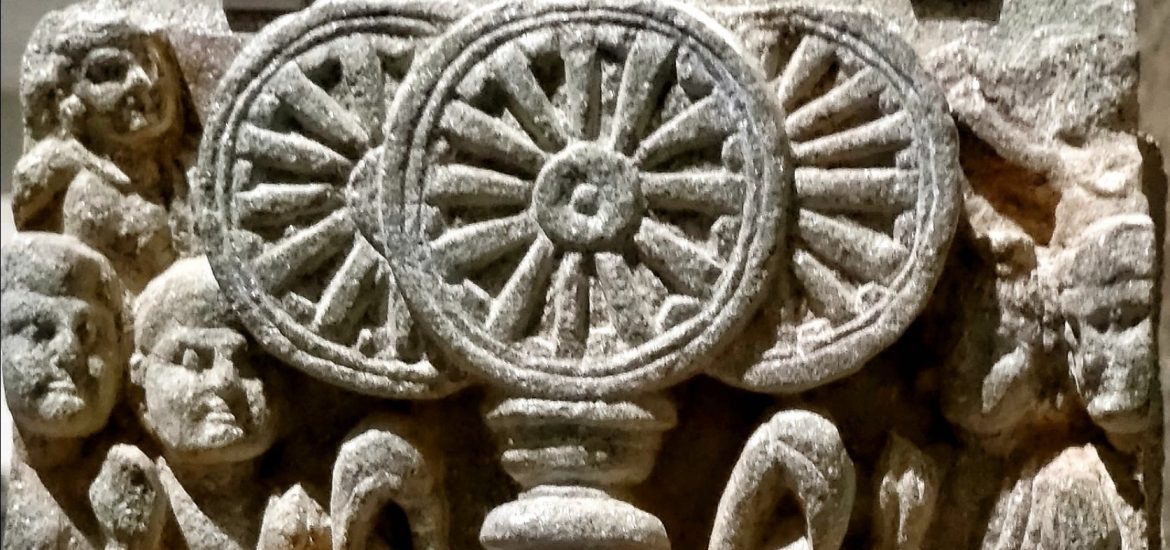After Siddhartha Gautama attained enlightenment and set out to convert open hearts to his new spiritual movement, he – or, at the very least, the earliest institution of the Buddhist Order – brought forth the formula expressing the heart of the Buddhist tradition. Conceptualized as the three treasures, the first constituent was Gautama himself, or more accurately, the traceless being he became, the Buddha.
The second “jewel” was the Dharma itself, the timeless and universal teaching (the Four Noble Truths, the Noble Eightfold Path, the Middle Way, and more) that he discovered.
The third was the “human repository” of people that followed the Buddha and his Dharma, be they enlightened arhats or otherwise: the sangha.
The Buddhist faith is collectively represented as the three treasures (Pali: tiratana; Sanskrit: triratna; Chinese: sanbao 三宝), to which all serious Buddhists are expected to take refuge in to indicate their conversion to this tradition. So has it been for over two and a half millennia, or at least very shortly after the first “refuge takings” that took place under the Buddha himself.
Specifically, Trapusa and Bahalika, caravan merchants that met the Buddha shortly after his enlightenment, were the very first to take refuge under only “two” treasures: the Buddha and his Dharma. Only afterwards was the third jewel formed for the first time, and notably, the sangha began with lay devotees, not with the monastic institution. That should tell us something about the importance of lay roles in today’s sangha.

The three treasures appear in some of the earliest schist art from Gandhara. Visually, they are represented as three wheels mounted on a great altar or worshipped high on a pillar. One of these many pieces (now at the British Museum; item 1970,0602.1) from the Kushan period in the 2nd to 3rd century depicts a trinity of wheels carried by a protective deity. One of my favorite depictions is of an exquisitely carved retinue of monks worshipping the three wheels at The Walters Art Museum in Baltimore.

But where do the three treasures appear, textually, as a collective representation of the Buddhist faith? Bhikkhuni Dhammadinna has studied early Buddhism, Vinaya, and ancient Buddhist discourse for decades. She shared in a brief conversation with me, “the Nikayas and Agamas, the earliest Buddhist texts, do describe the Buddha, Dharma, and sangha in the Sanskrit ‘ratna’ – jewels.” She suggests that amateur historians like myself have a look at the Ratanasutta in the Khuddakapāṭha (6), which in verse describes the Buddha, Dharma, and sangha as jewels.
Without a deep dive, it would seem that the nomenclature of the “three jewels” appears only in the Pali commentaries, and therefore in the Pali ratanattaya or tiratana. “I do not know off of my head where the Sanskrit version of the “three jewels” (triratna) occurs earliest,” said Ven. Dhammadinna.

She also noted: “However, the suttas of the Nikayas and Agamas usually describe someone making a declaration to the effect that one goes thereby for refuge in the Buddha, in the Dharma, and in the sangha. That is the recurrent formula, which does not speak of going for refuge in the ‘three jewels,’ nor in anything – as far as I know – like the Buddha-gem, the Dharma-gem, the sangha-gem.”
The historical question remains, therefore, as to when individual associations with the Buddha, Dharma, and sangha became enshrined as the tripartite formula. It was probably fairly soon after the completion of the Ratanasutta, or even in the period during its composition, that Buddha-Dharma-sangha became subsumed under a threefold formula. Given the Buddhist love of numbers and the human inclination toward archetypes of three, it is not hard to see why the three treasures became the core of the Buddhist dispensation.
See more
Gandhara, the triratna worship (Himalayan Buddhist Art)
Ratanasutta (SuttaCentral)


